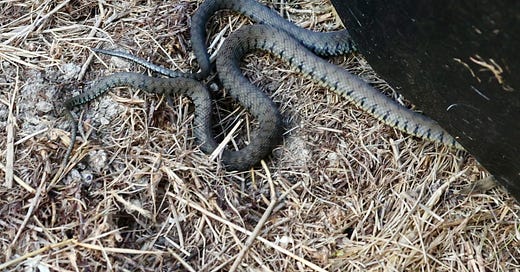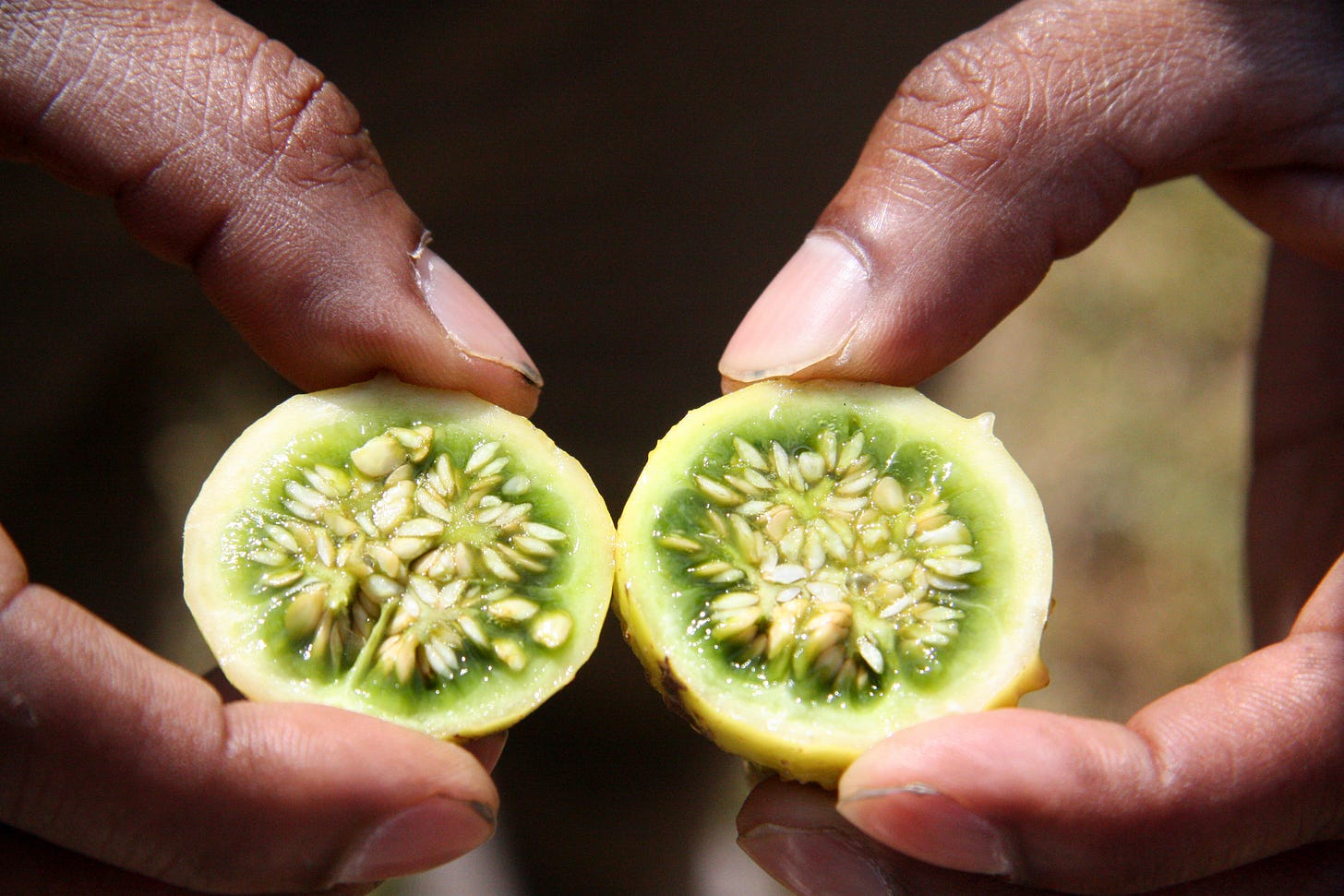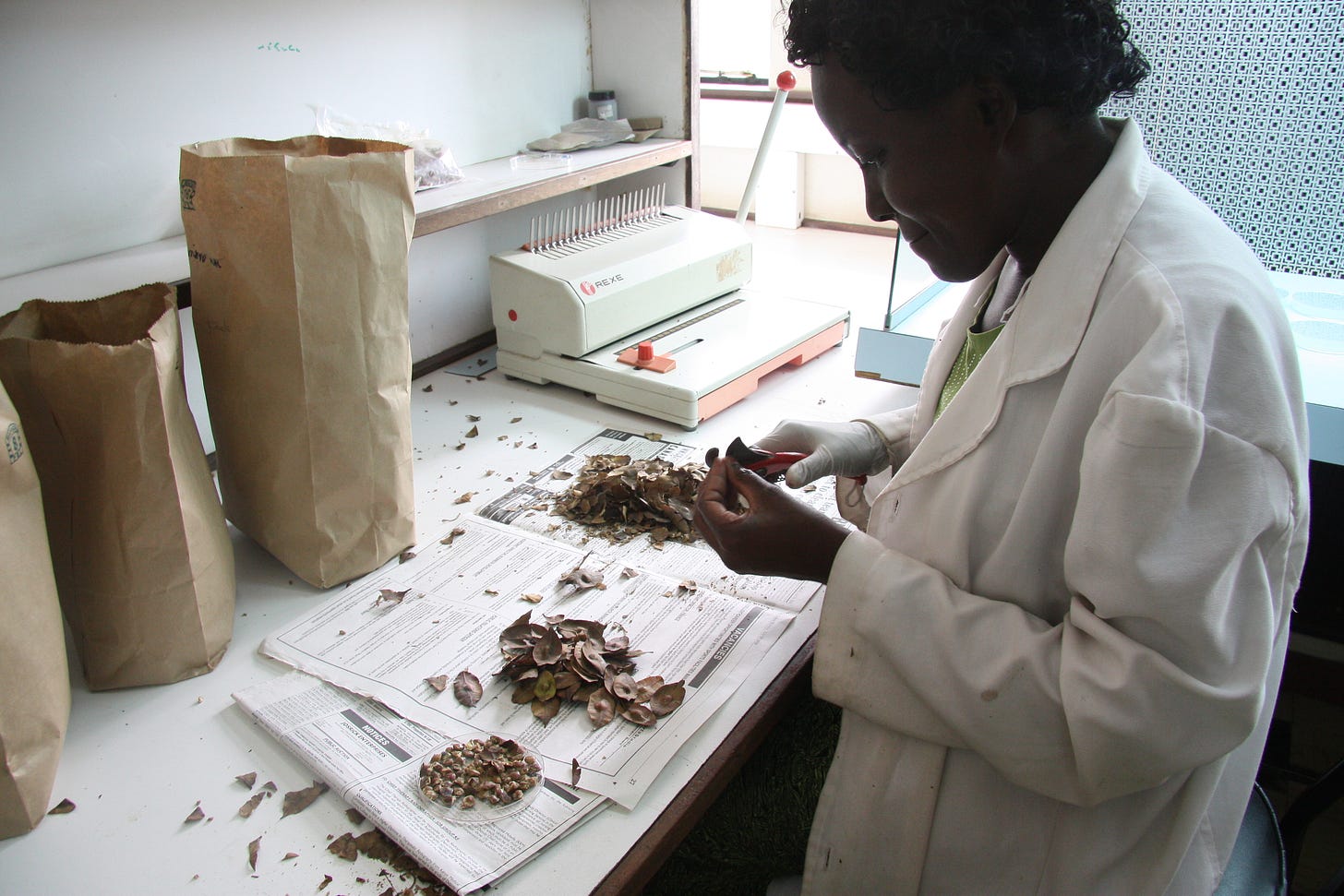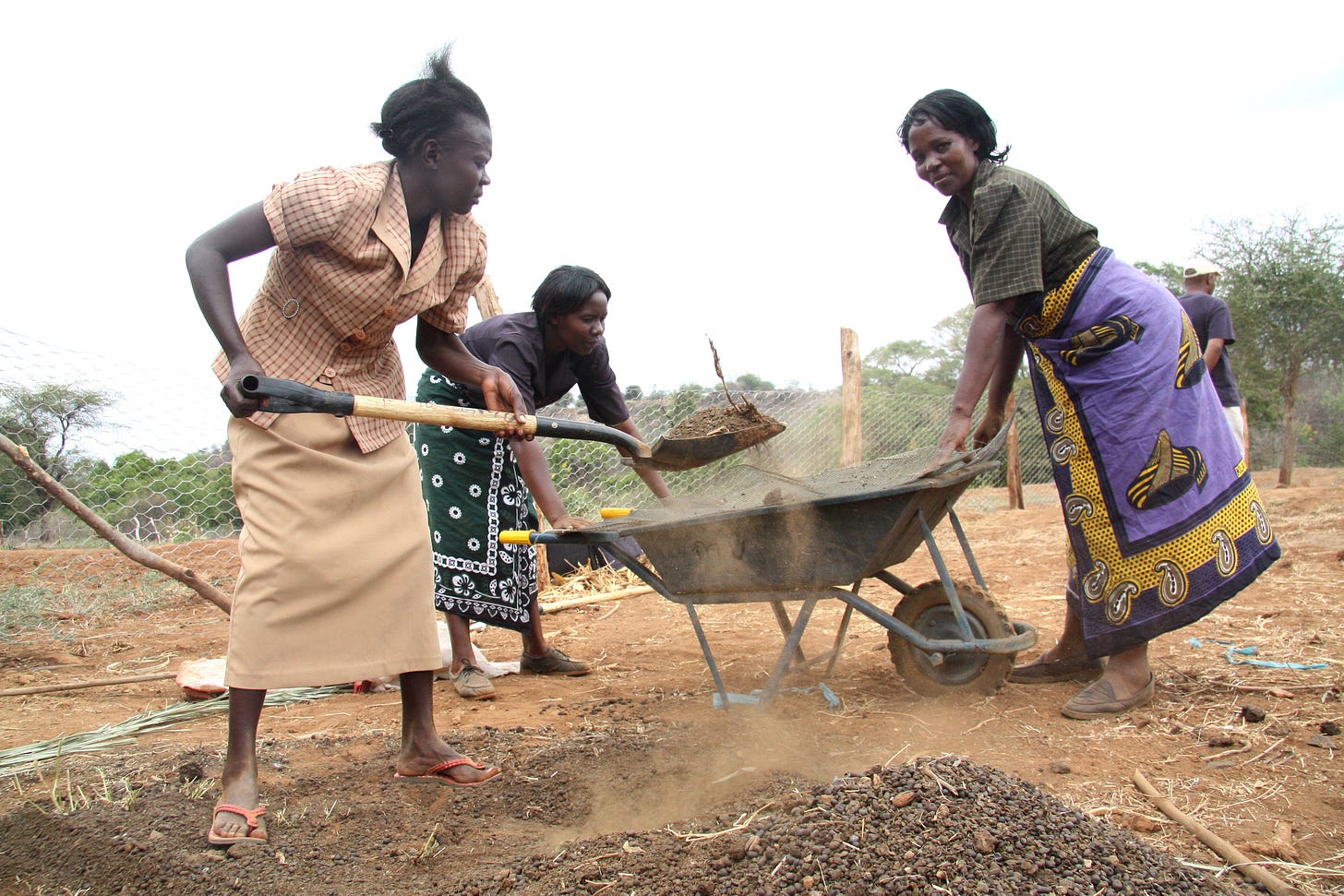Amongst All The Bad News...
There is a lot to be gloomy about when it comes to climate, but there are little moments of hope. In lockdown I dug a pond because I wanted to cultivate insects and amphibians. They are not having a good time at the moment, not with all the agricultural sprays that kill them. The pond was miraculous. Dragonflies appeared almost immediately, swiftly followed by water boatmen, diving beetles, water scorpions and newts. I decided not to add anything, just wait and see what the wind blew in. First it was bulrushes, then reeds. Once the reeds got high enough, a moorhen built a nest in them - although without much success as yet.
A year ago I put down a section of old roofing felt next to the water. It’s black and absorbs heat. My hope was that I might attract lizards or even a snake. Whenenever I remembered, I would check it and find nothing - until yesterday…
Two tiny grass snakes that streaked off as soon as I lifted their cover.
It’s good to remember that all over the world, people are doing their best to improve or save their environment. Some have a wide impact, others like me just do a little in their own patch, but I reckon it all helps.
Fourteen years ago I went on assignment to cover the work of botanists in Kenya who were collecting seed for the Millenium Seed Bank. Despite the fact that Kenya is suffering terrible human pressures on land, leading to declines in all sorts of plant and wildlife, I found this story profoundly uplifting. It was the enthusiasm and dedication of the botanists, determinedly gathering seeds from rare and sometimes previously unrecorded species. This week, in the face of all the gloomy news, I dug out the pictures from that trip.
We first went up into the Aberdare mountains where there’s a ecozone threatened by global warming. Rare endemic plants are retreating up the mountain. Here botanist Paul Kirika collects samples of the giant groundsel.
Here he checks out the thistles next to the groundsel. The same type of ecosystem exists on all the high East African peaks, but always with unique differences and peculiarities.
Here Paul and Dr Patrick Mthoka collect seeds on the high plateau.
One of the marvels is the giant lobelia, rather different to the lobelia commonly used in hanging baskets in the UK.
Lower down the slopes on the edge of a bamboo forest we found this new species of sonoma fruit. The seeds are taken back to Nairobi then cleaned, dried and stored at minus 18 degrees Celcius.
We moved between several locations, searching down possible sightings of plants as yet unknown to science.
Here Tim Pearce from Kew Gardens, Patrick and Paul discuss potential locations that need to be explored.
In Tharaka District on the Somalia border, villagers were planting native tree species, trying to regain control of their environment which is drying out.
Women do the physical work while the men ponder and devise new strategies…
It’s a busy time for me at the moment so I’m aiming to get a story out every fortnight, but things might get a bit sporadic until autumn. Thanks for the likes and comments, they keep me going!














